One of the things we knew we wanted to do during our three-day stay in Poland was to visit the Auschwitz concentration camps in modern-day Oświęcim. To accomplish this, we had the choice of either booking an organized tour or figuring out the train tickets from Warsaw to Kraków and then the transportation to Auschwitz by ourselves.
After mulling it over a bit (and fiddling around on the Polish train ticket website, to no avail), I went with the former option, and organized a day trip from Warsaw to Auschwitz and Kraków through Poland Travel Tours.
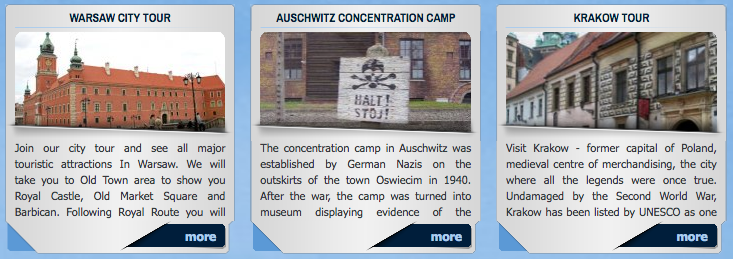
I reached out to Andrea from Poland Travel Tours over email, who was very nice and accommodating. The tour included a return shuttle bus between the place we were staying in Warsaw and the train station, return train tickets, a driver who would take us between Kraków and Oświęcim, a three-and-a-half hour tour of Auschwitz-Birkenau concentration camp, and about four hours of free time in Kraków.
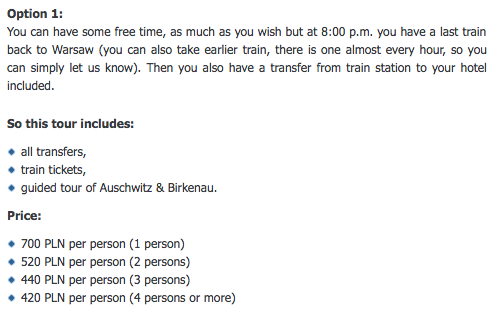
The total cost was 520 złoty (~$182) per person, though it would’ve been cheaper if we were a larger group. There was also an option to add a private walking tour in Kraków, though we opted against it, since we figured we would be drained after touring Auschwitz for half a day.
Our driver, Mateusz, picked us up at Apartament na Mariensztacie at 4:40am to ensure we caught our 5:20am train. The three-hour train ride passed by uneventfully, and before we knew it we were in Kraków, where we were greeted by Poland Travel Tours’ local guide, Jakob, holding up signs with our names on it. We hopped in a seven-seater van and made a few stops at various Kraków hotels to pick up some other travellers before embarking on the two-hour drive to Oświęcim.
We arrived at the main Auschwitz tourist centre at about 10am. The place was absolutely packed with visitors, ranging from foreign tour groups to Polish schoolchildren. Our little group of Poland Travel Tours patrons was shuffled together with a few other groups and together we began our tour under the guidance of our fantastic tour guide, Agnieszka. She runs her own tours out of Kraków as well, so if you’re in the region and looking for a tour guide, I can’t recommend Agnieszka highly enough!
We began the tour by walking through the infamous Auschwitz gates. Arbeit macht frei, or “work sets you free.” Chillingly ironic.
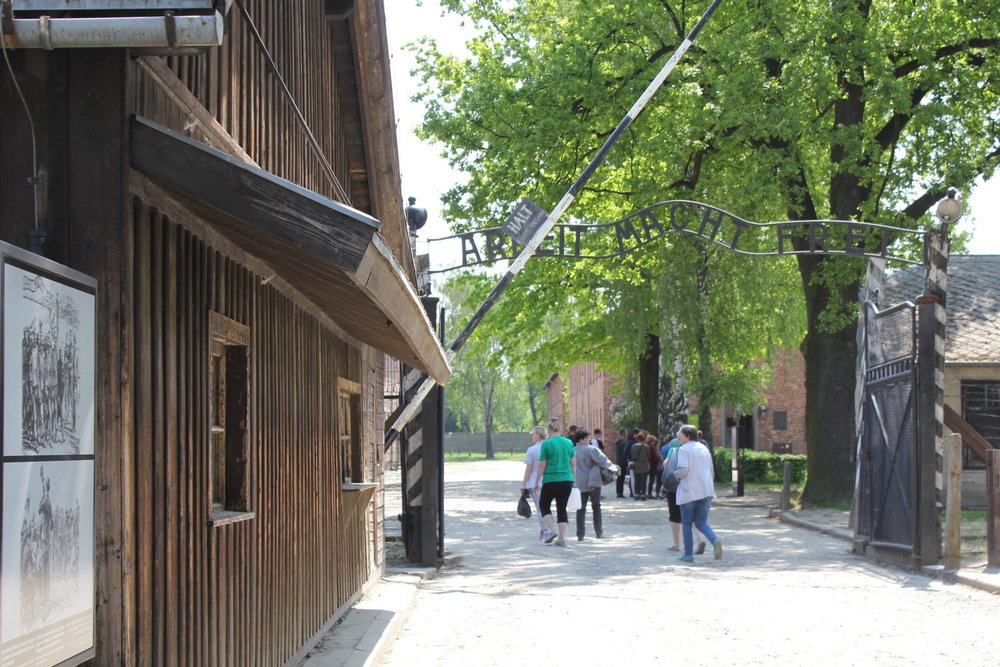
Auschwitz I – Main gate
(To clarify, “Auschwitz I” was the original camp at Auschwitz. It was primarily a labour camp and housed many of the concentration camp’s prisoners. “Auschwitz II–Birkenau” is the name of the much larger facility some distance away, which served as both a concentration camp and and an extermination camp. “Auschwitz-Birkenau” generally refers collectively to all the camps in the area.)
Agnieszka led our group through the various barracks of the camp that had been repurposed into exhibits of the atrocities that had taken place here. A sombre mood quickly set in as we reflected on the unspeakable crimes against humanity that had taken place in these very
I think it’s best to let the pictures speak for themselves, with some captions for context.
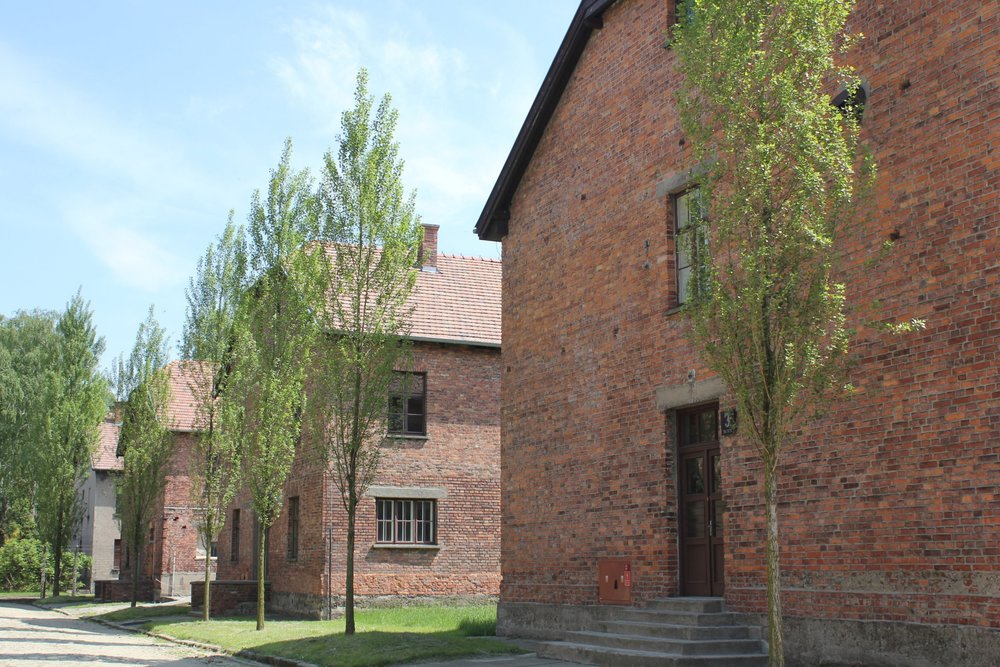
These barracks in Auschwitz I served various purposes, primarily housing the camp’s prisoners.
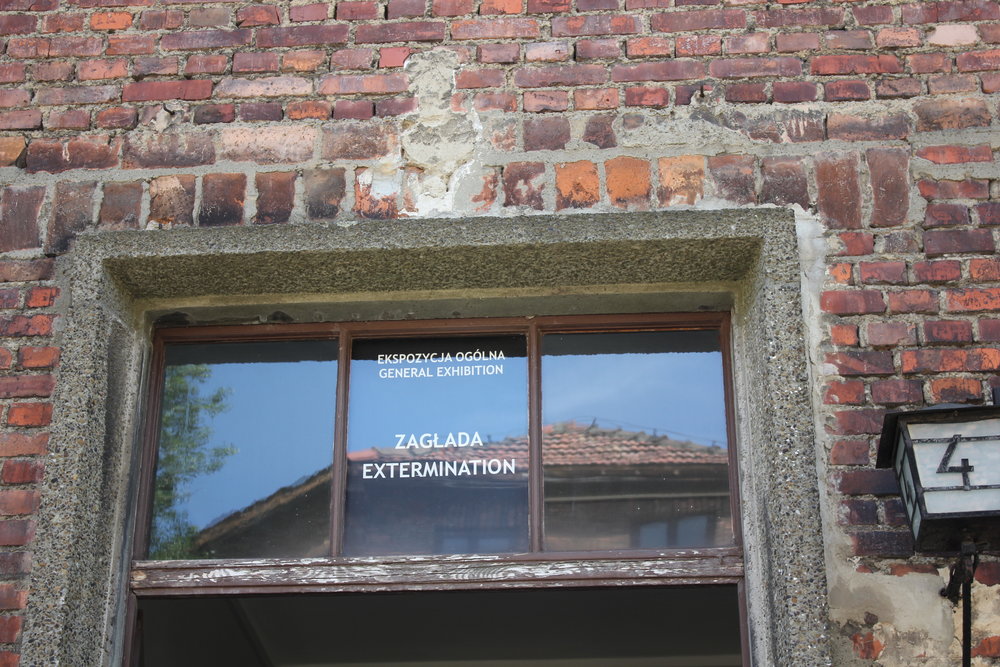
Entrance to the “Extermination” exhibit
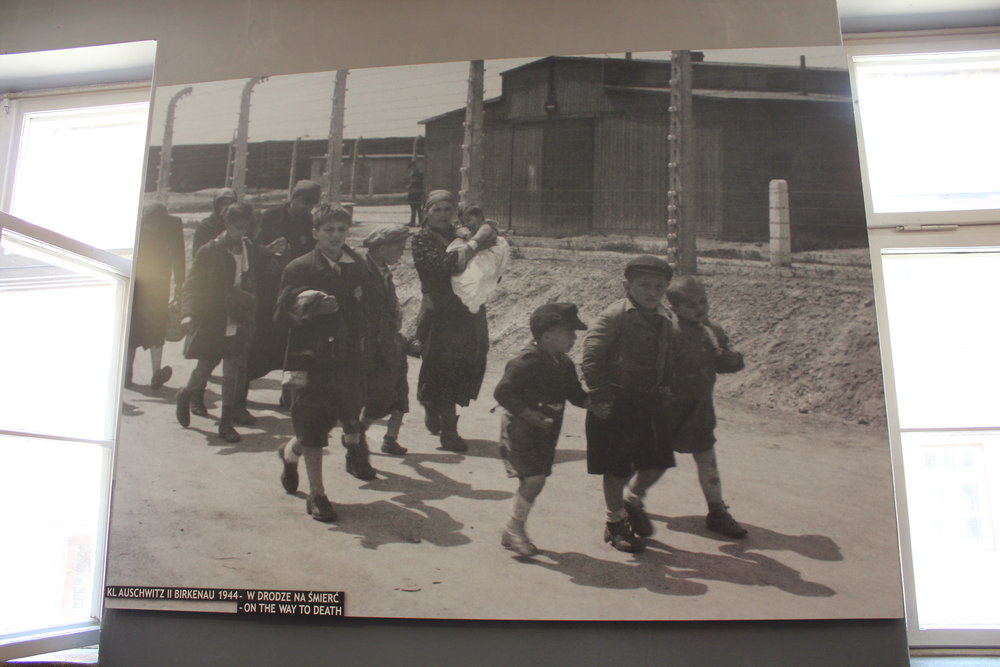
“On the Way to Death”: a photograph of young Jewish boys and their families who had just arrived at Auschwitz II–Birkenau and were making the walk to the gas chambers
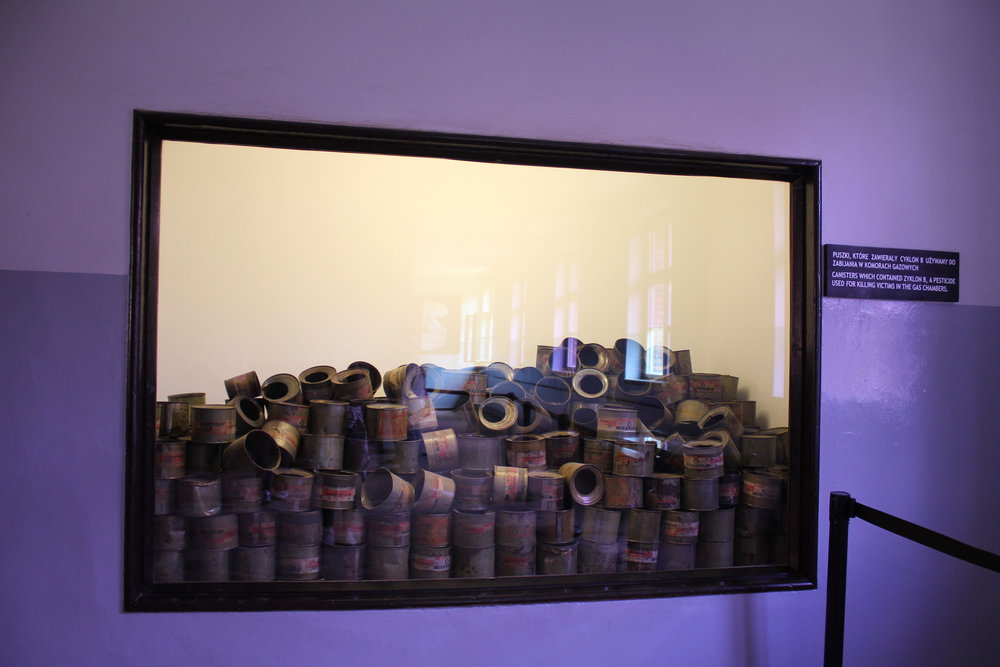
Discarded canisters of Zyklon B, the poisonous gas used in the extermination process
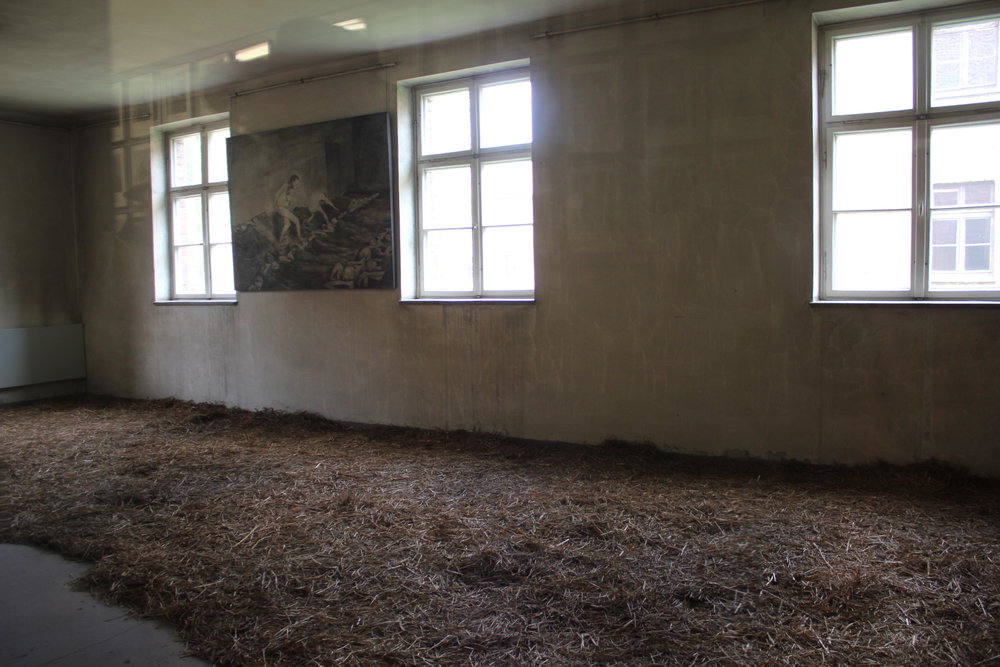
Straw “bed” upon which prisoners slept every night
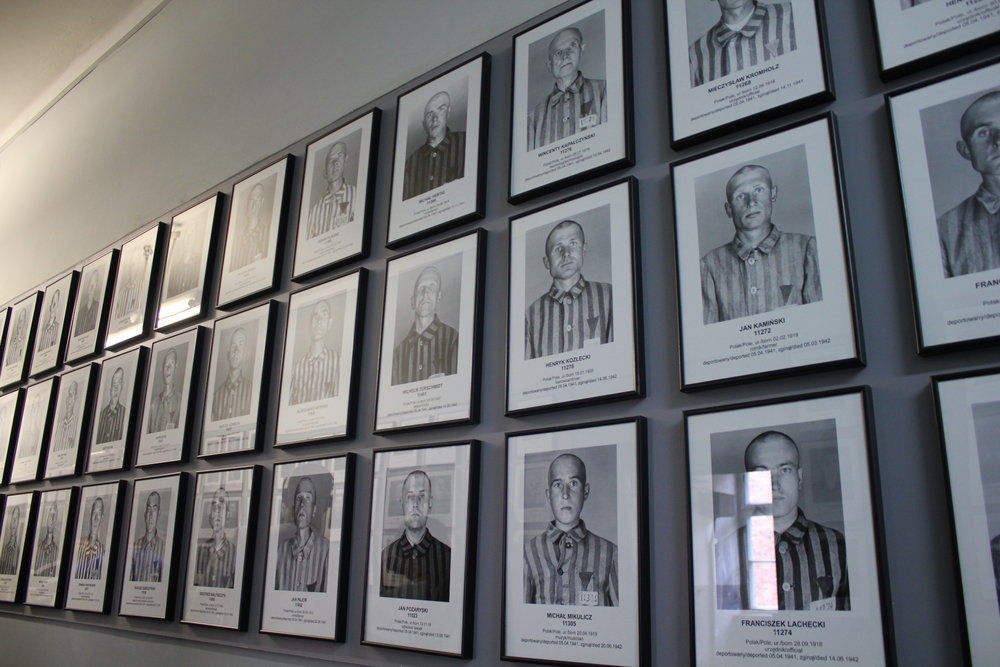
Photos of Holocaust victims, taken from the Nazi files, are hung up along this wall to honour their memory
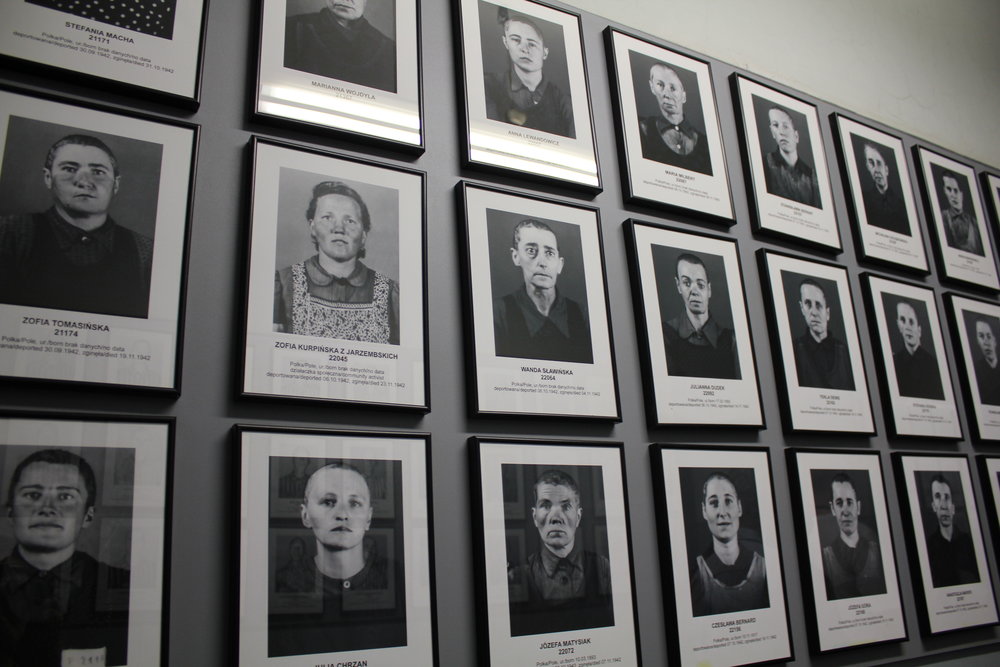
Another set of victims’ photos
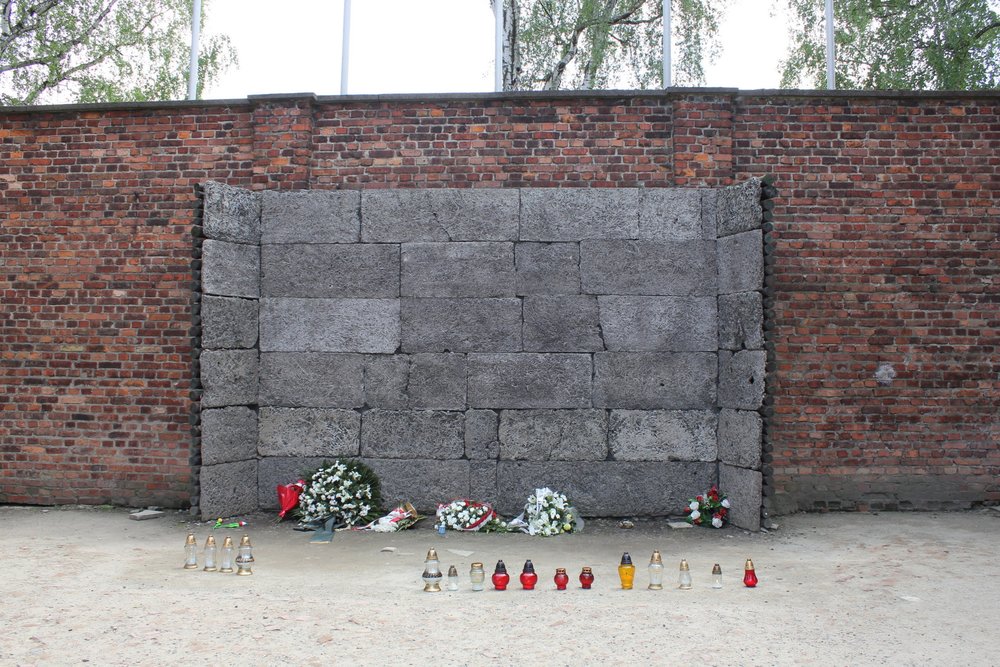
The infamous “death wall” at the notorious Block 11 of Auschwitz I, where thousands of prisoners were executed
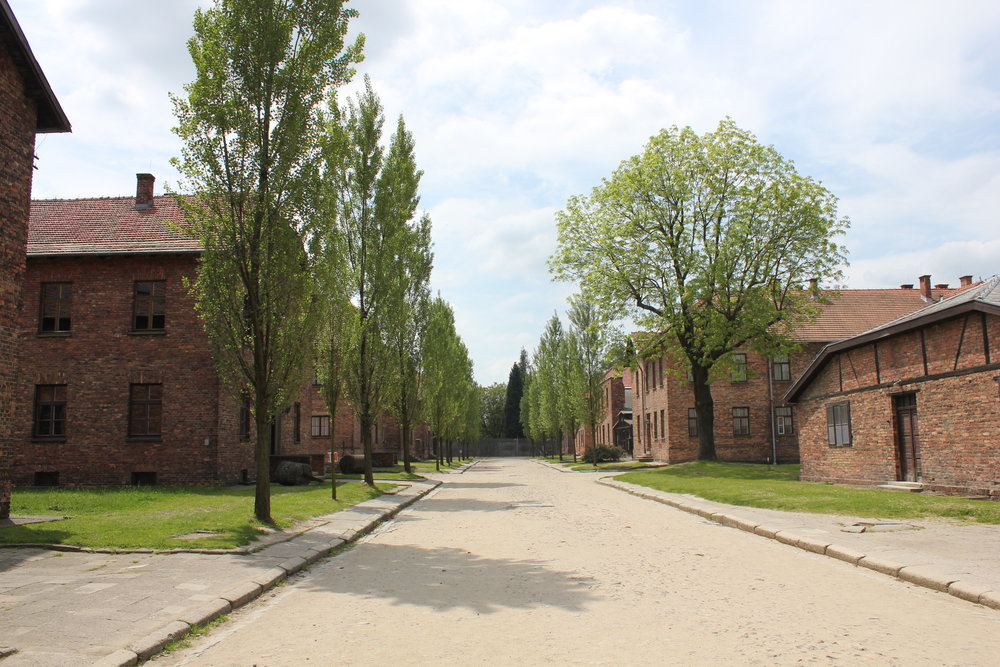
The barracks at Auschwitz I
After the tour of the barracks, we visited Krema I, the small and singular gas chamber located onsite at Auschwitz I, one of the few that survived the war. The other, larger ones – Krema II and Krema III – were located at Birkenau, and were partially destroyed by the Nazis as they left the concentration camps in an attempt to bury the evidence.
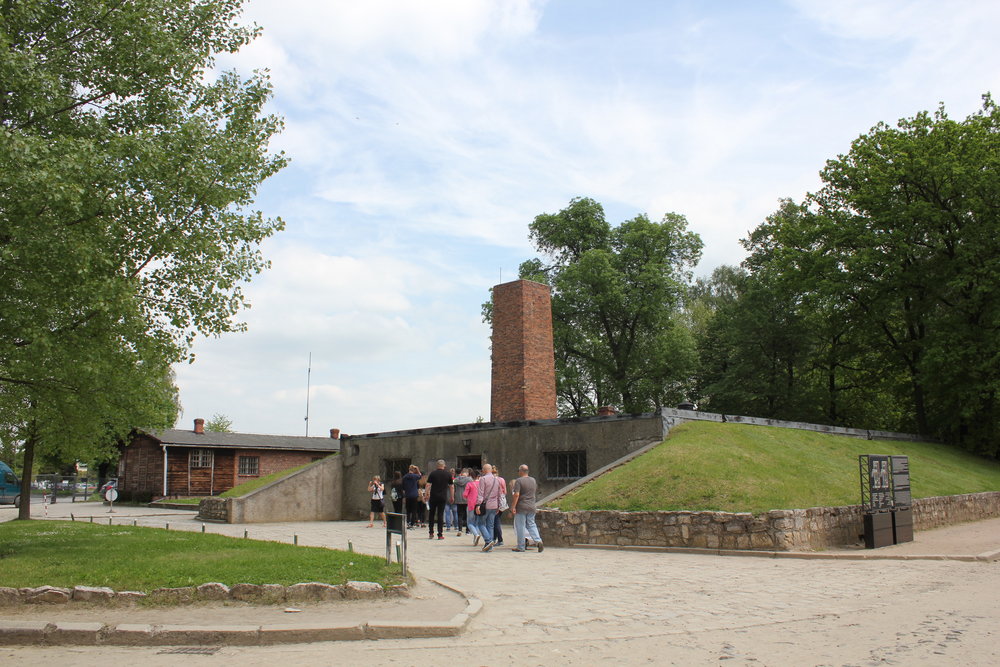
Krema I exterior
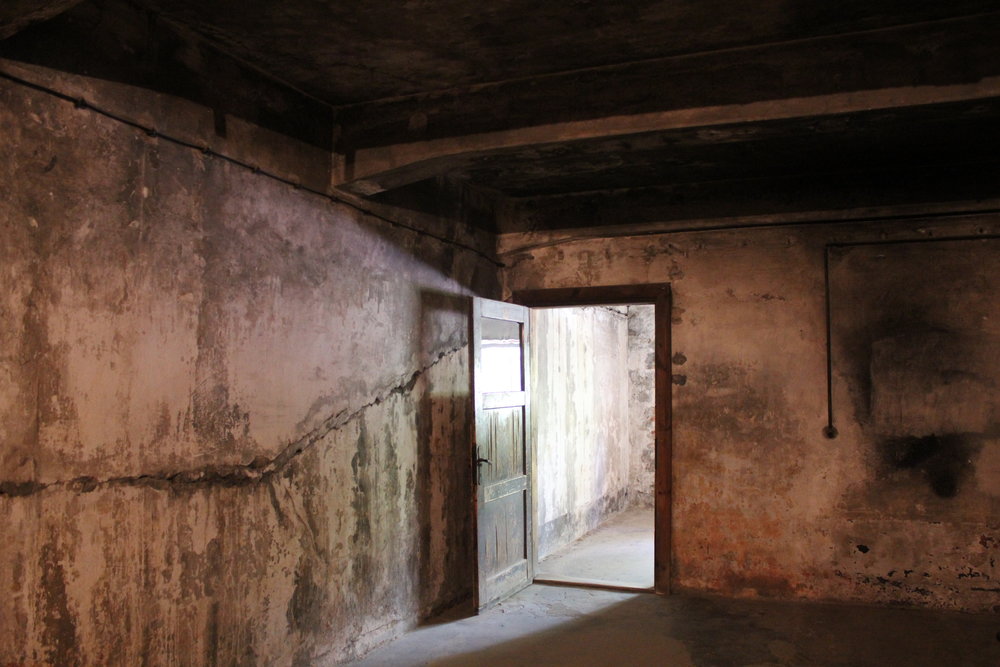
The entrance to Krema I
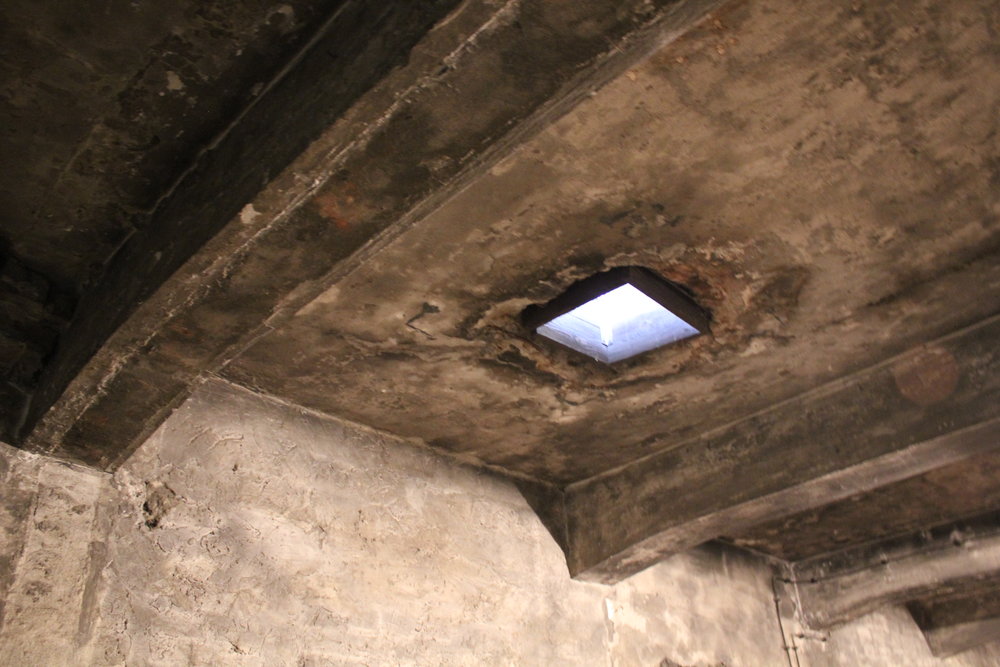
The hatch in Krema I through which canisters of Zyklon B were dropped
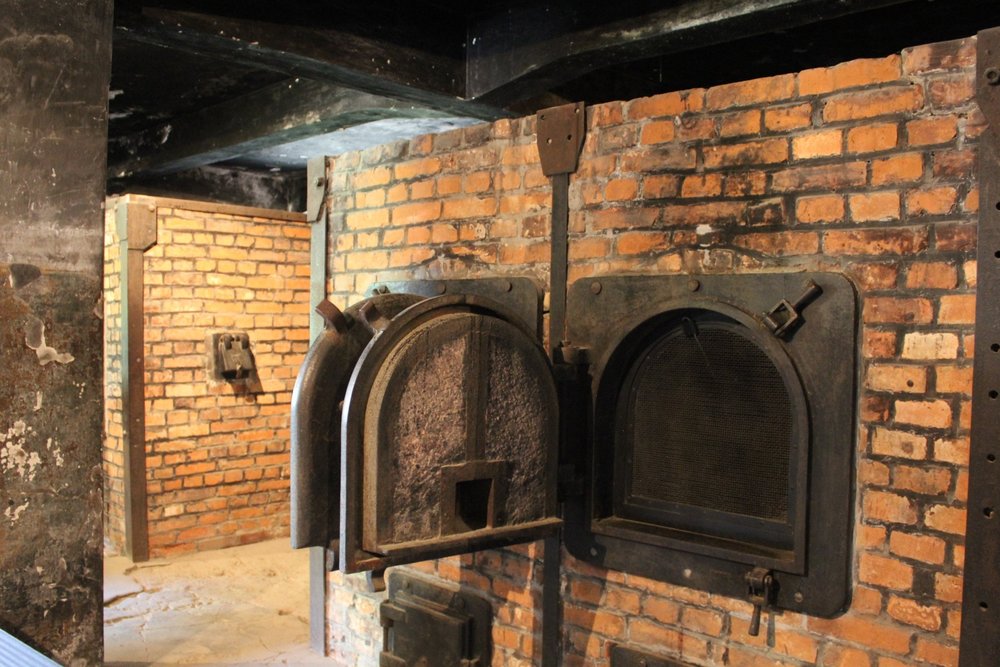
The furnace located on-site at Krema I: certain camp prisoners, known as Sonderkommando (“special unit”) were responsible for cremating the bodies of gas chamber victims on an industrial scale. The Sonderkommando were themselves killed every few months and replaced with new prisoners, due to their intimate knowledge of the Nazis’ crimes.
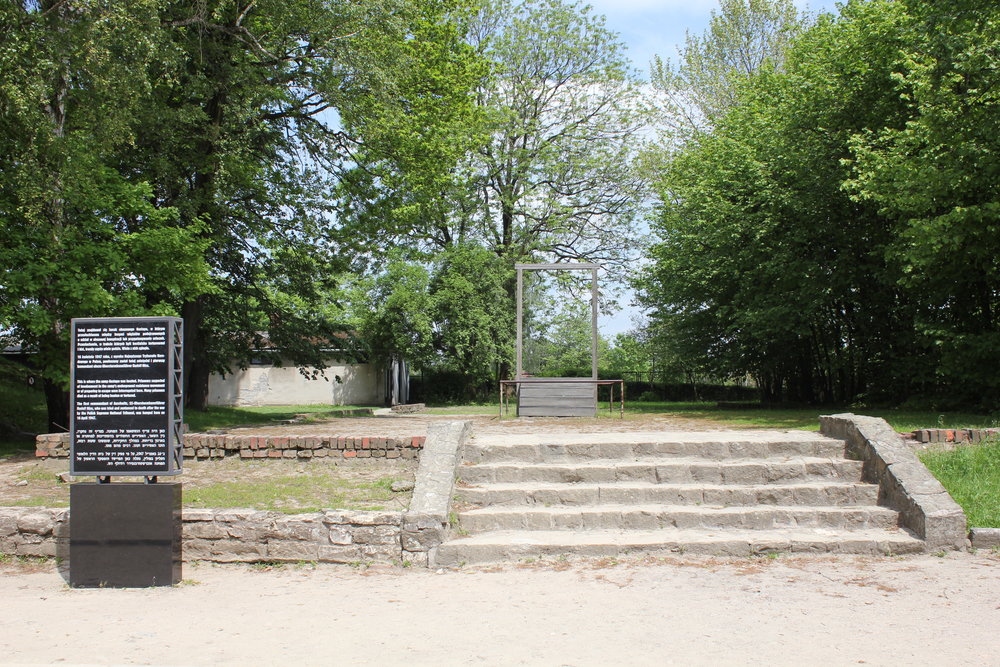
Immediately outside Krema I, the gallows where Rudolf Höss, one of the longest-serving chief commanders of Auschwitz concentration camp, was hung after the war
Our tour of Auschwitz I ended at this point and we broke into our smaller groups to make the journey over to Auschwitz II–Birkenau. Everyone hopped back into Jakob’s van for the quick 10-minute drive.
When visiting Birkenau, you park some distance away from the main gates and walk the rest of the way. The sheer size of Birkenau becomes apparent during this walk. It’s far bigger than Auschwitz I, and the charred carcasses of its barracks, partially destroyed by the Nazis, stretches into the distance as far as the eye can see.
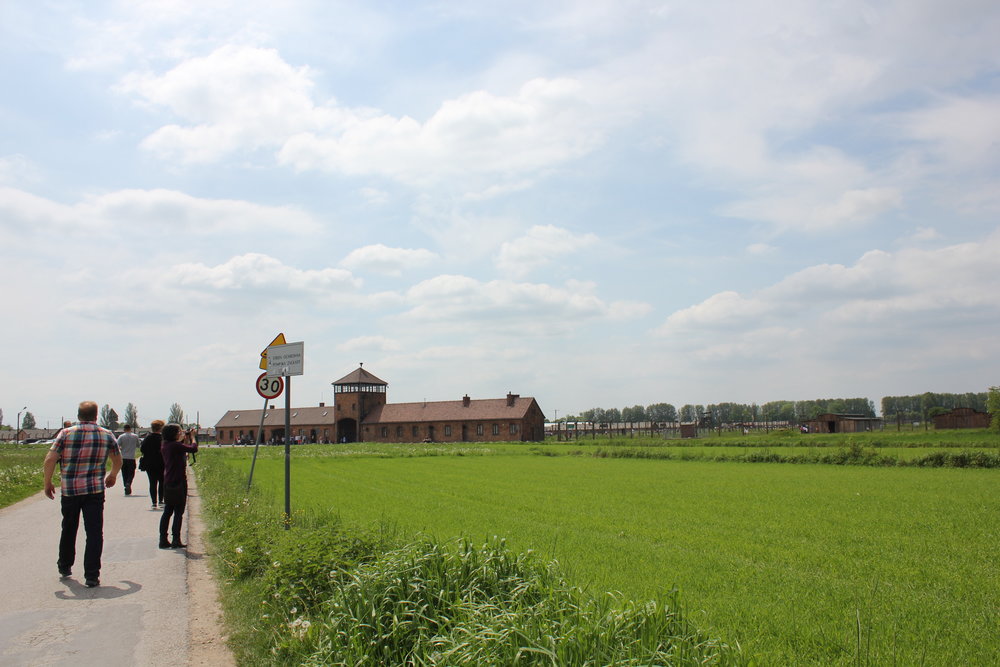
The walk to Auschwitz II–Birkenau
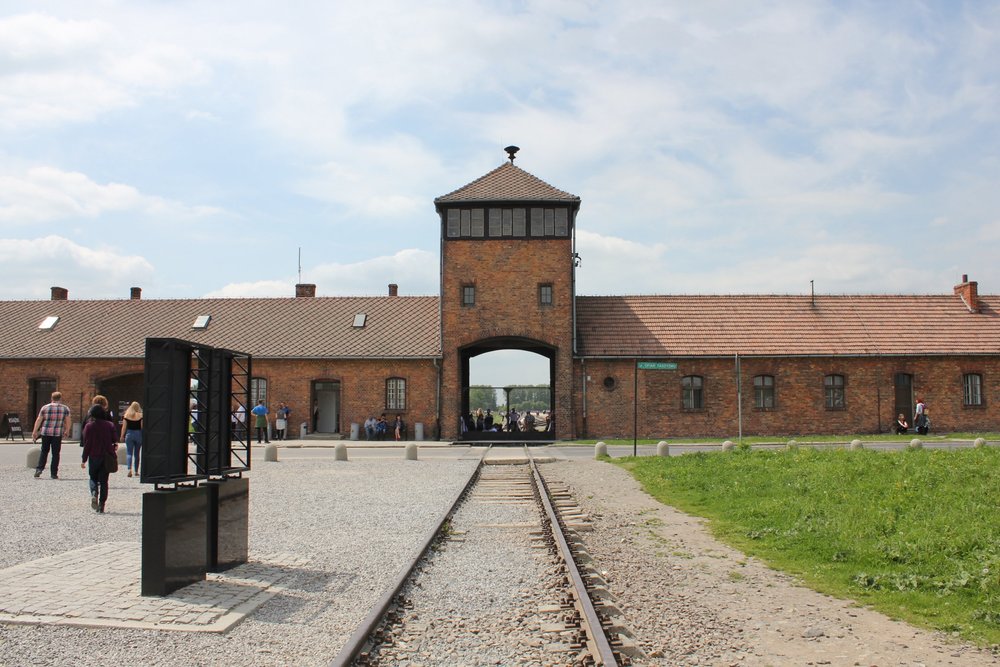
The “death gate” at Auschwitz II–Birkenau: these were the gates that greeted 1.3 million Holocaust victims that perished at the Birkenau extermination camp, including 1.1 million European Jews
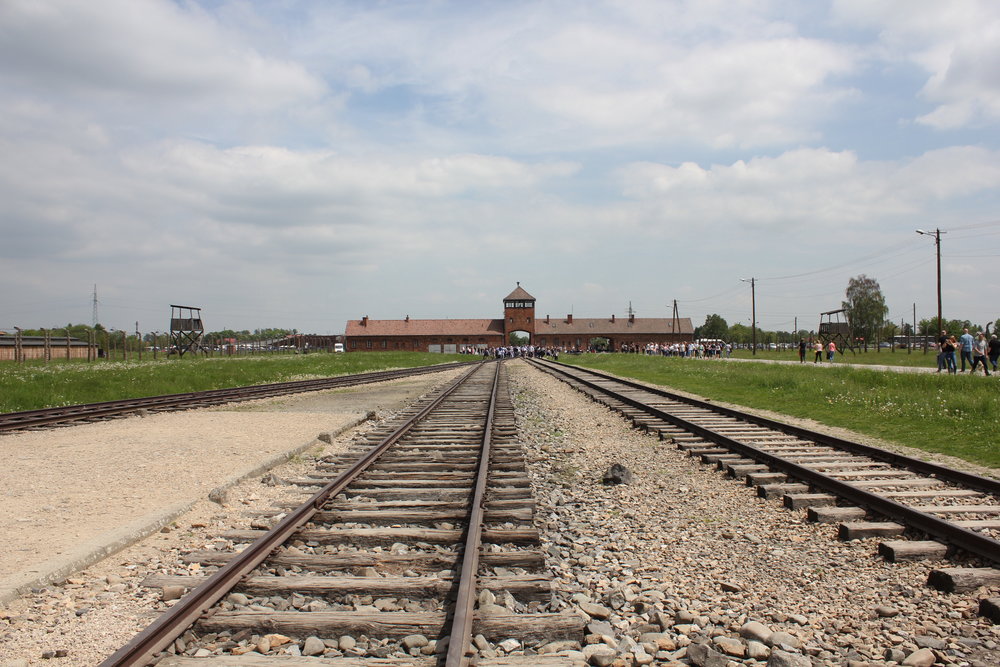
The “death gate” as viewed from within: the Nazis constructed an entirely new railway spur to transport Jews directly into the Birkenau extermination camp, in order to make the extermination process as efficient as possible
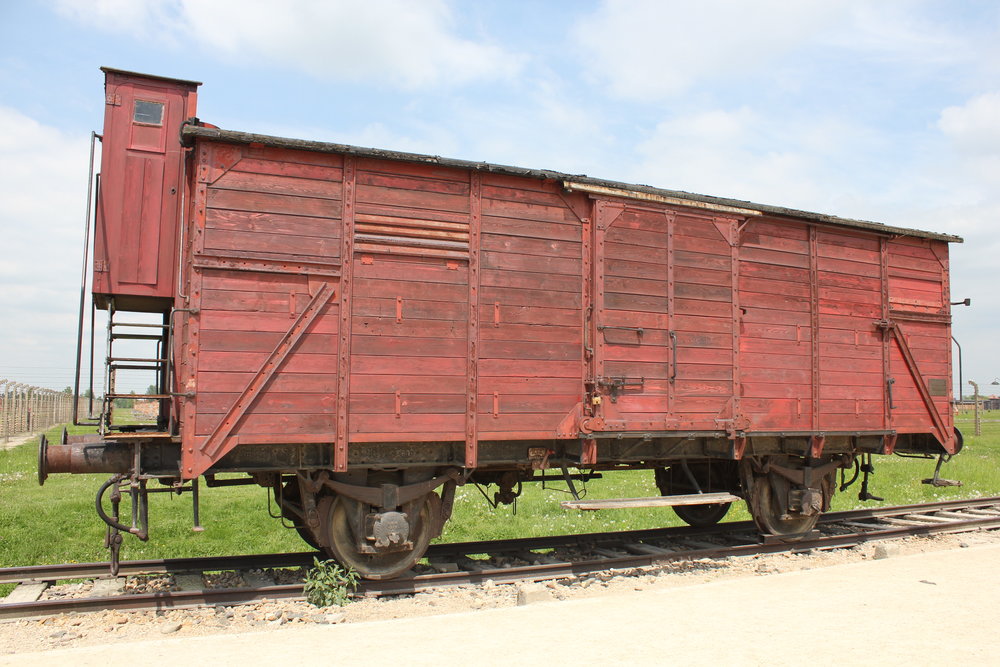
A typical train car that brought Jews to Auschwitz from all over Europe: Jews would be rounded up and packed into these train cars for several days with no food and no room to do anything but stand. The longest journey took 18 days and was made from Crete – upon arrival at Birkenau, everyone was already dead.
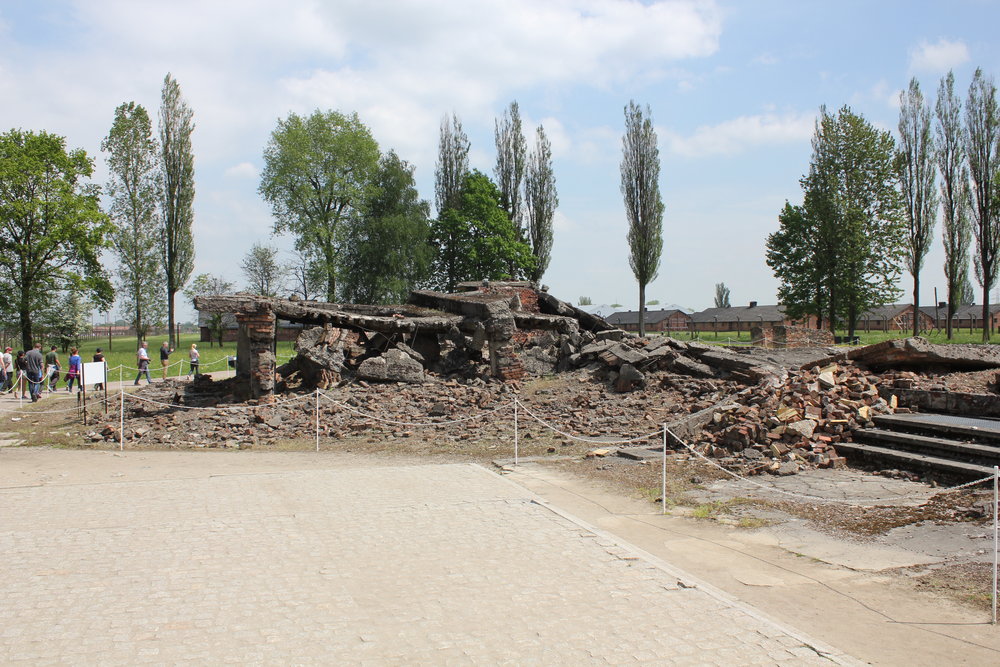
The ruins of Krema II – together with Krema III, this was the largest and deadliest gas chamber at Auschwitz–Birkenau, the site where over 500,000 Jews were gassed to death. Most victims would have walked from the platform where they got off the train directly to these gas chambers.
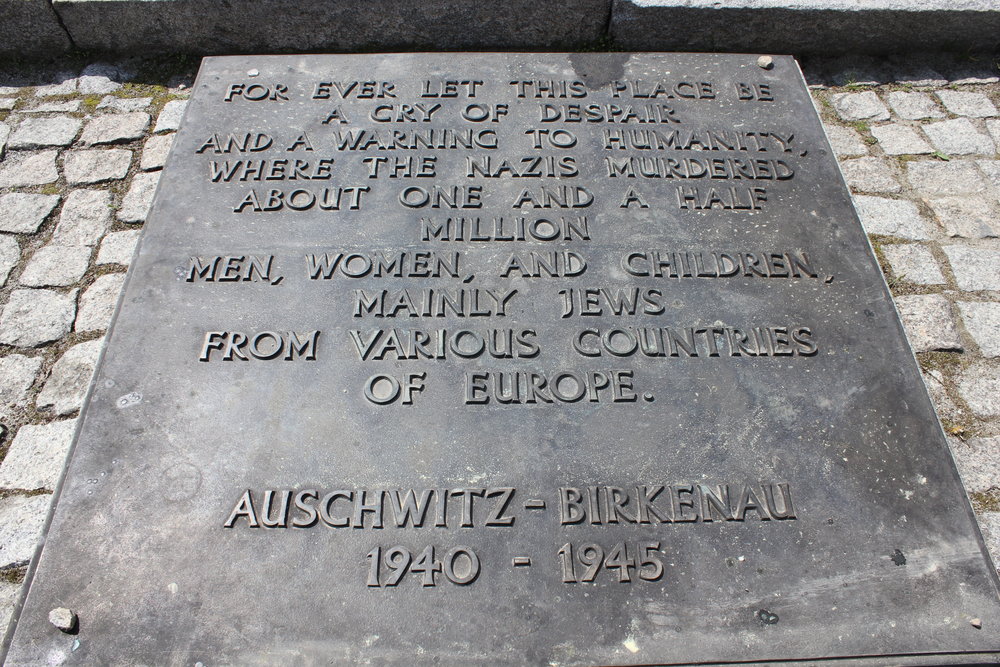
The English memorial plaque at Birkenau – between the ruins of Krema II and Krema III, there lies a row of granite slabs with the above text inscribed in every major language of Europe
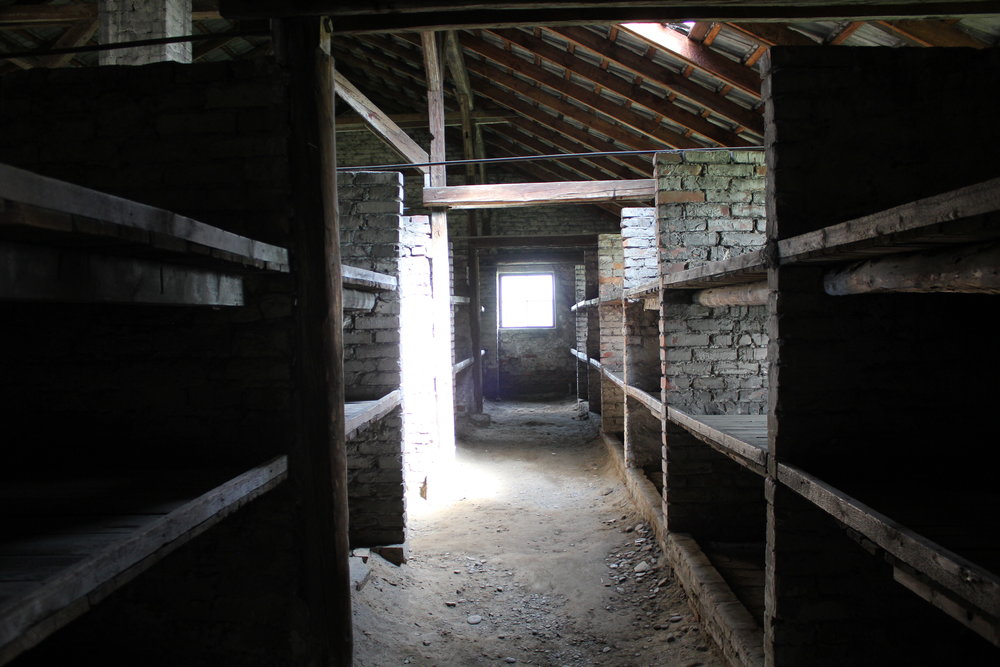
The last stop of our tour, the “Death Barrack”: this barrack housed women prisoners who were identified as being no longer fit to work and were to be sent to the gas chambers
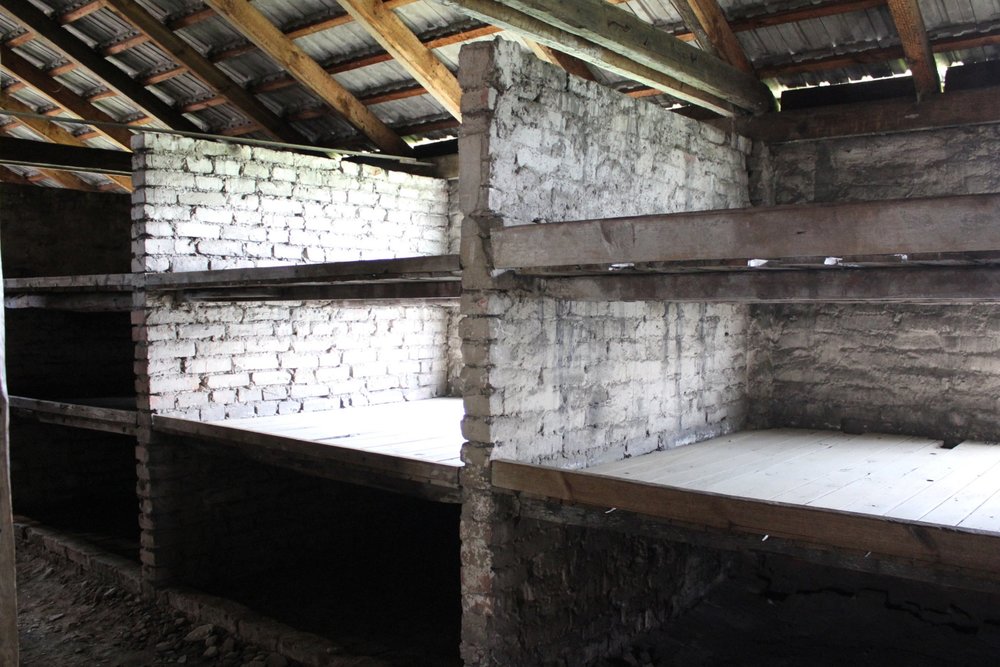
Women had to sleep on these bunks (the lower bunk was no more than cold hard ground) while awaiting their deaths, since the gas chambers were at full capacity due to the masses of arriving Jews. Countless women died here before they could be summoned.
The “death barrack” was a place where death was only staved off because thousands more were dying in the meantime, and it was a fitting place for Agnieszka to end the tour. She told us that due to vandalism, tours would soon be forbidden from visiting the “Death Barrack”, one of the few remaining barracks at Birkenau that have survived to this day.
It goes without saying that the mood throughout this tour was beyond sombre. Nevertheless, it was inspiring and heartwarming to see a group of Jewish students visiting the camp while wearing Israeli flags on their backs, paying their respects.
Conclusion
Wow. This was by far one of the most emotionally and mentally draining sightseeing trips I’ve ever done. (Not to mention physically – I slept like a baby on the ride back to Kraków.)
I think “surreal” is definitely the right word to describe it – as we made our way out through the “death gate” of Birkenau, I grappled with the thought that over a million Jews were systematically murdered here on a mega-industrial scale. They were brought in on these very train tracks before my eyes, they walked the same half-mile that I had just walked between the train platform and Kremas II and III, and they were then packed into those facilities en masse and gassed to death. Their lives erased; any trace that they existed just going up in smoke, one after another. And for some reason, my mind just could not fully process this reality.
No place on Earth has known death more intimately or has borne witness to such extremes of what humanity is capable of. This visit to Auschwitz-Birkenau, while chilling to the core in its sombreness, served as a stark reminder of what travel means to me. Several generations later, the world at large remains fraught with division and fracture. Expanding our horizons and interacting with unfamiliar cultures and ideas is more important now than ever, in order to bridge these divides and ensure that we advance away from the unspeakable atrocities that have checkered our past.


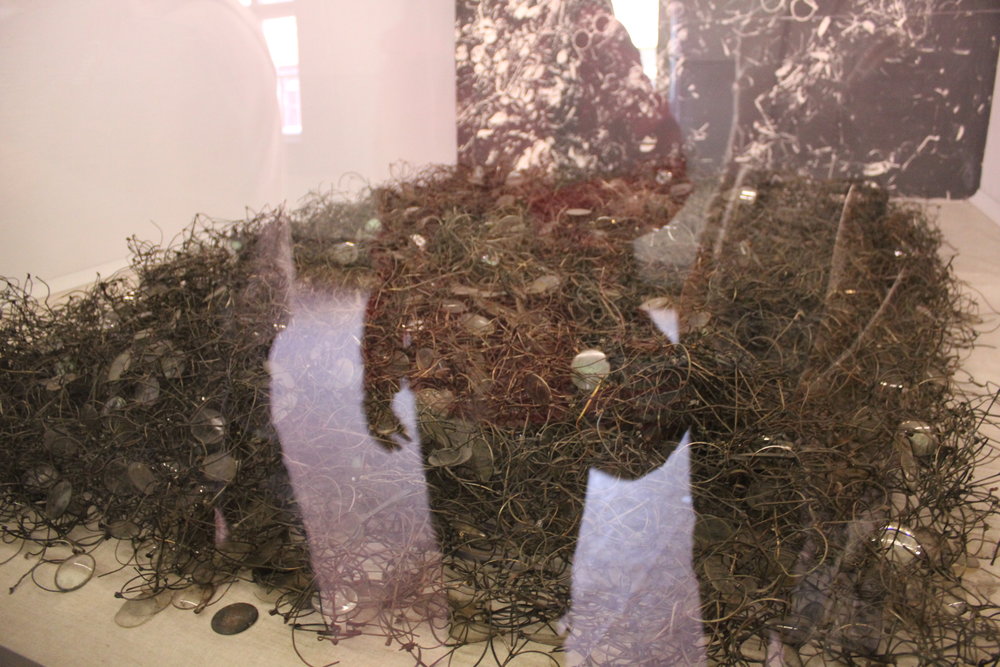
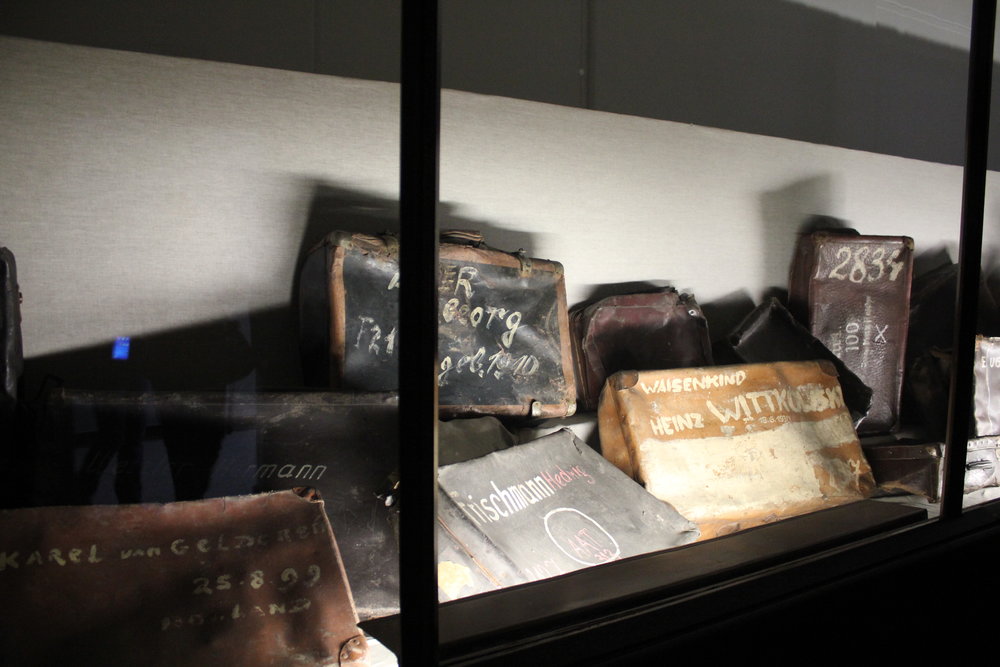
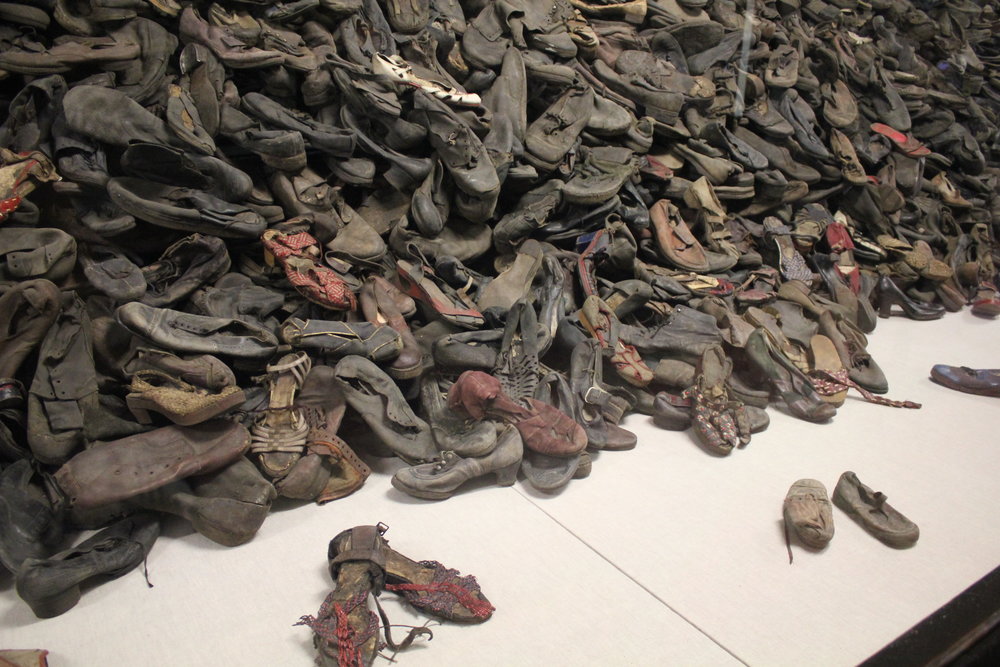
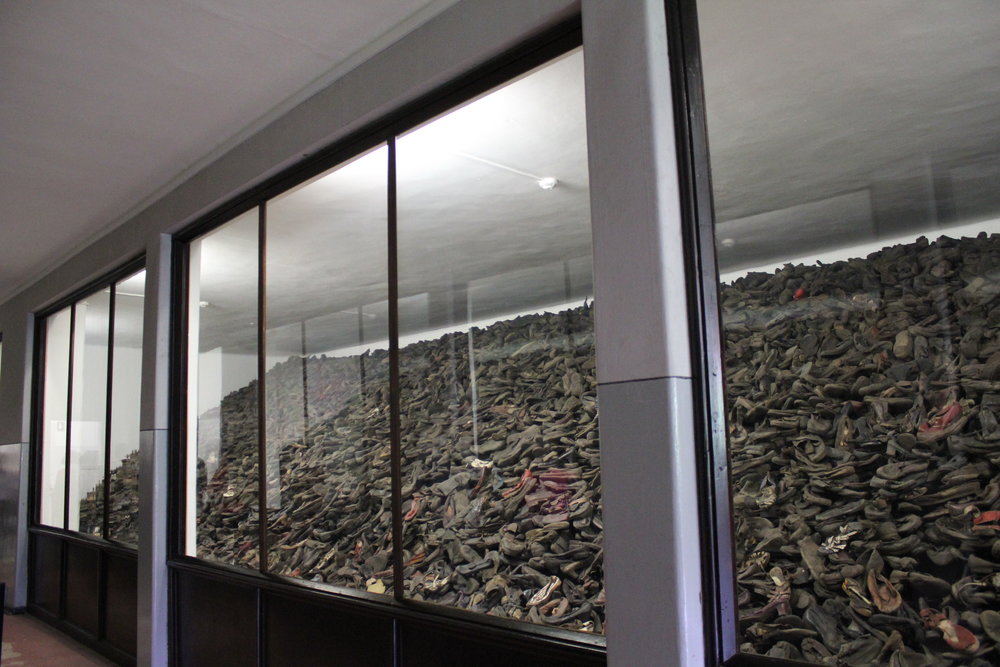
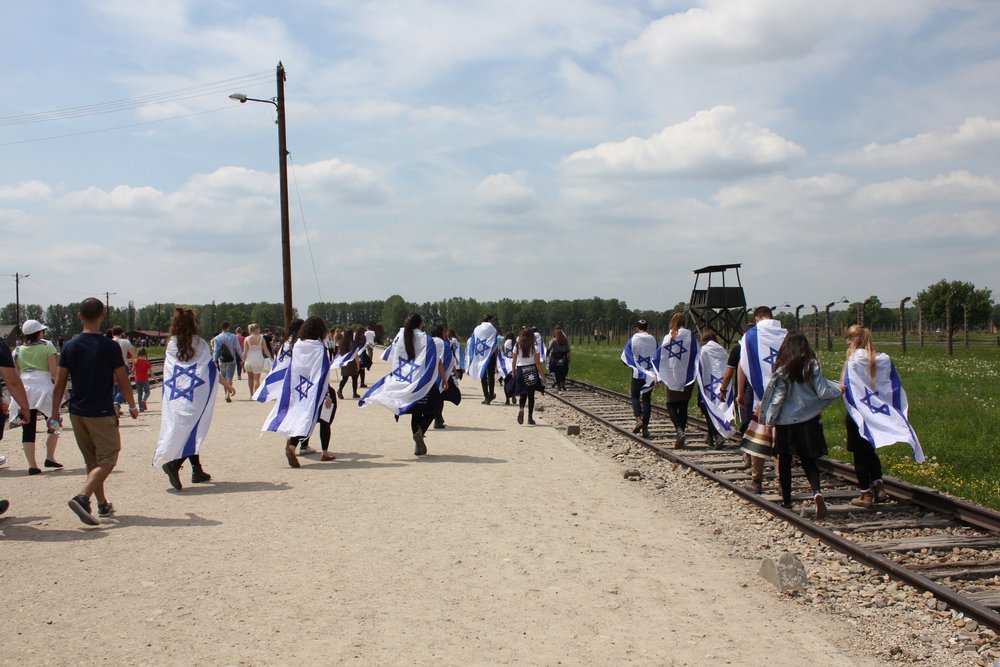
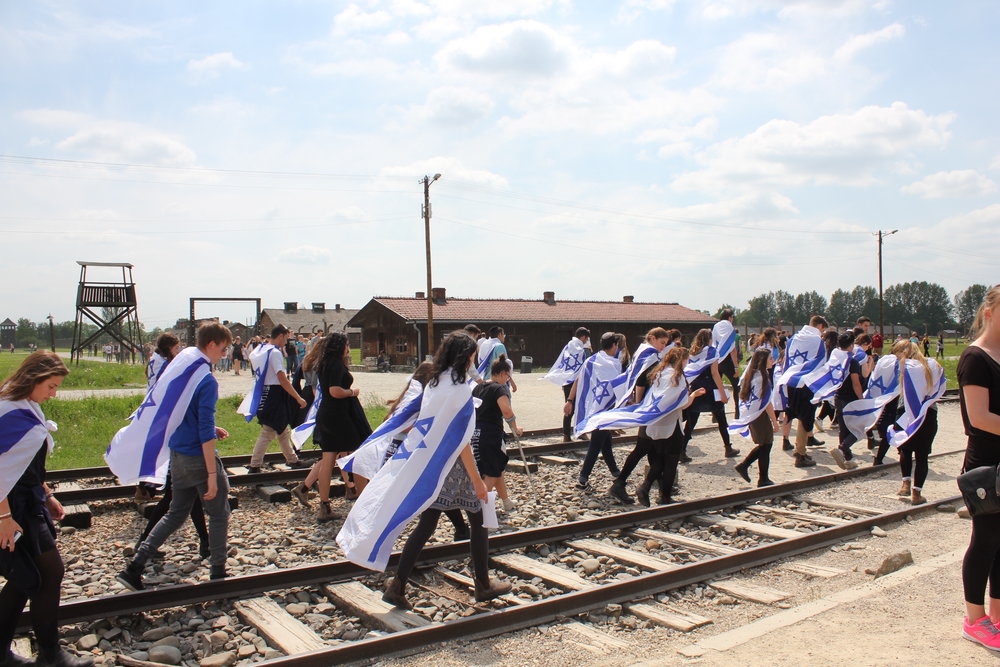
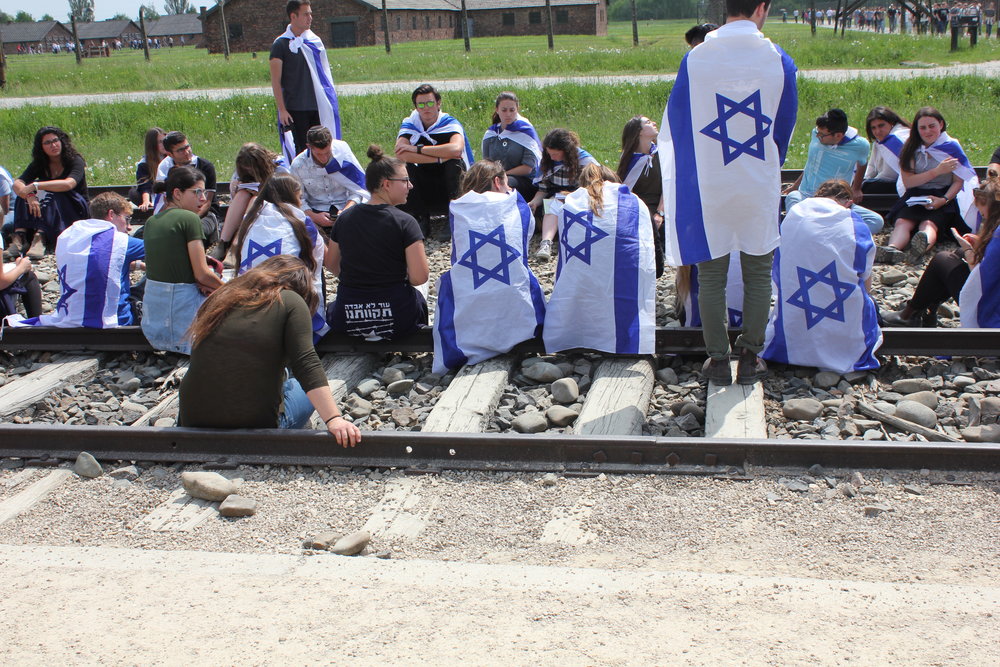
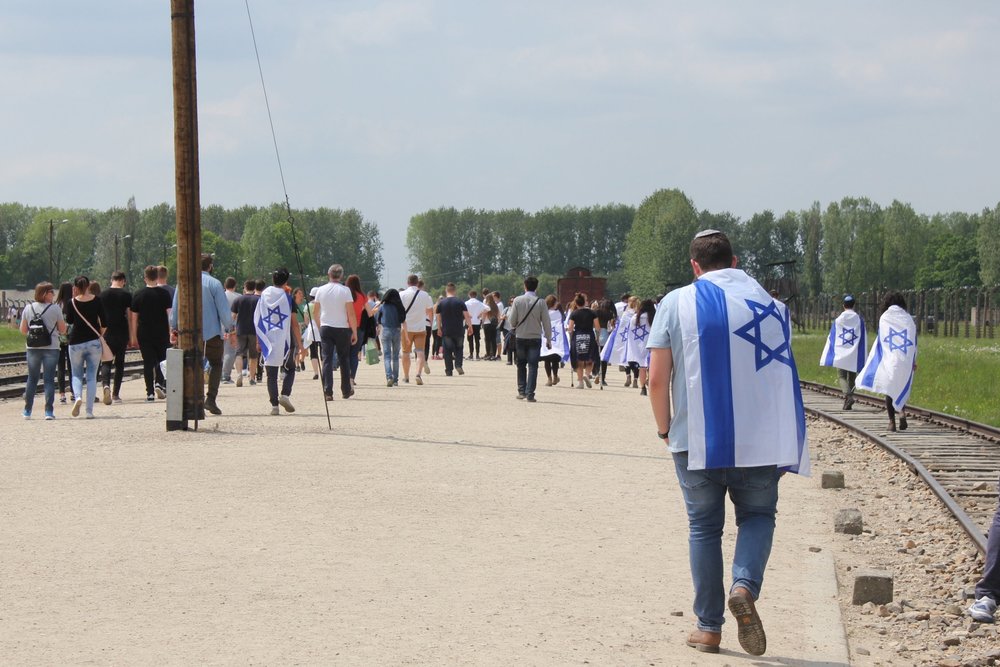











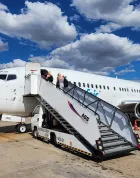

Thank you for this.
I visited both camps in June 2017.
This puts my experience into words which I have struggled to say. A month later, I am still emotionally drained and indeed, changed from my experience.
Sadly, I ended up with a double tour group which I found particularly challenging. I heard a woman no more than 30 years old behind me saying "oh, it’s sad"…. maybe this is just me but I actually wanted to shake her and scream at her that "this is not sad" "this is horrific! It’s madness and horrendous!" with a few expletives to show my complete horror at what I was witnessing.
I went to Poland specifically to see the camps, to see the faces of the murdered and to recognise as many as possible as human beings. I saw Orthodox Jews entering the camp on their visit to pay their respects with dignity and humility which was palbable. I also saw the German under 21’s football team brought in with a police escort to Birkenau to pay their respects.
Whilst I have nothing against the young German Team and I know that they visited Auschwitz 1 first – I would have found their visit more palateable had they stayed more than 15 minutes to lay their generic ‘tributes’ for their photo opportunity.
I cannot imagine the horrors that went on here during those years, to see in pictures, to see in documentaries and to read in books is one thing, to visit is another – you can feel the fear, despair and disbelief, but to actually have lived through those days, those who were actually allowed to live through them , we cannot possibly conceive.
Jane, thanks so much for sharing your thoughts.
I have to say that it’s hard to recall the exact feelings that I experienced during my visit. What I do recall is just feeling empty inside for a large portion of the tour, almost as though I was hearing our tour guide’s words but not fully comprehending them. Like you said, we can’t possibly conceive of the horrors that were experienced there.
I would recommend everyone to visit Auschwitz, but of course for very different reasons than I would ordinarily recommend something to someone. It’s definitely a difficult trip, but I think everyone takes away something from it, even if it can be futile to try to put that into words.